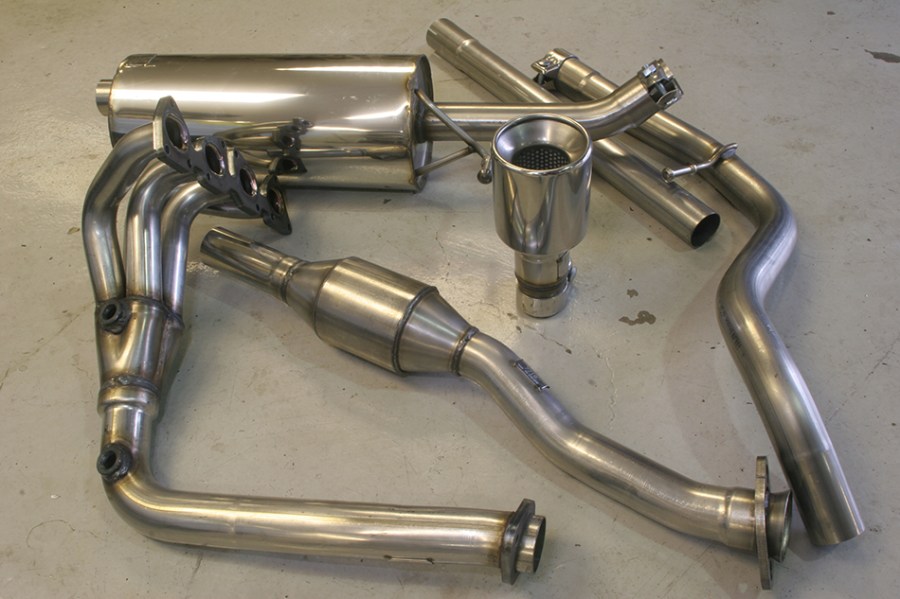What’s involved in creating a bespoke or performance exhaust system? Find out with our guide to custom exhaust systems.
There’s a skill to designing and manufacturing an exhaust system. It all starts with looking at the vehicle it’s going to be fitted to. Space is the biggest limitation and often the deciding factor for the configuration of the exhaust system. So a four-branch manifold, for example, may not have the space in the engine bay to fit it. There’s often more room underneath the vehicle to be creative with the rest of the system. However, mufflers are often limited to where there’s room to tuck them out of the way. Ripping them off when travelling over a speed hump is the last thing you need.
There’s also a whole host of other factors you need to consider. Are you changing the exhaust for more power? Just to elevate the sound? To meet track day regulations? Maybe you want a design that no one else has or you want to join the Bosozuko crew. Whatever your goal is needs to be considered when building the exhaust. If you want the most amount of noise, you can forget silencers. For the vast majority of us who want a blend of noise and performance, you may start thinking about a sports catalytic convertor, or running one silencer rather than two. Before you consider a custom system, explore why you’re upgrading your exhaust before you make decisions.
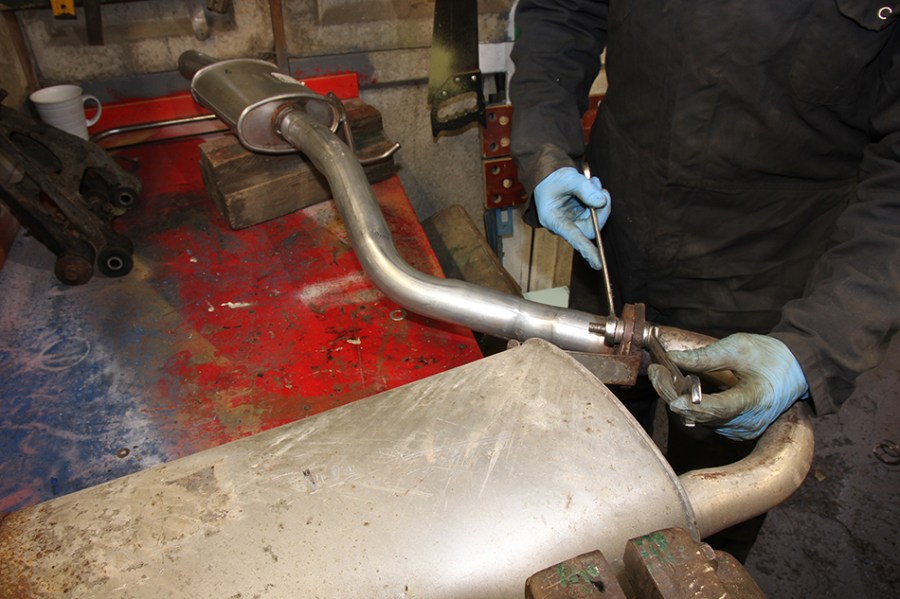
Make a custom exhaust yourself
Can you really make your own exhaust system? Bolting together alternative pipes, mufflers and catalytic converters sounds tempting. Parts such as a sports cat, a packable muffler and a large-bore pipe could make a difference. However, that’s providing everything will fit together and can be secured with suitable hangers and mounts.
Inevitably, there will need to be some cutting, welding and modifying to make a custom exhaust system fit. Unless you are skilled at these jobs, it’s not something for the average DIYer.
Professional welders
Welding tubes together, along with fitting flanges and mounts, is only half the battle towards making an exhaust system. The angle and position of these parts when fitted needs to be considered. This can present numerous headaches, resulting in an exhaust system that bangs against the center tunnel or fouls the bulkhead. It perhaps highlights how a made-to-measure performance exhaust system carries a high price tag. Someone has spent days or weeks designing, making and testing these parts to ensure they fit.
Welding tubing together generates a couple of potential problems. Firstly, the welds need to be airtight to ensure exhaust gases don’t escape. And secondly, the heat from welding may distort the metal tubing. So it will need to be checked and may have to be bent to shape afterwards.
Car exhaust bending
A tube bender is often used to shape the pipework for an exhaust system. Otherwise, the tubes need to be cut and welded together to create the correct shape. From a DIY perspective, it is feasible to bend long sections of tubing. Bending them over large round objects, such as a wheel and tire, reduces the risk of kinking the pipework.
For shorter sections of tubing, this isn’t so easy. Applying heat can help, but increases the risk of burning yourself and anything that comes into contact with the pipework.
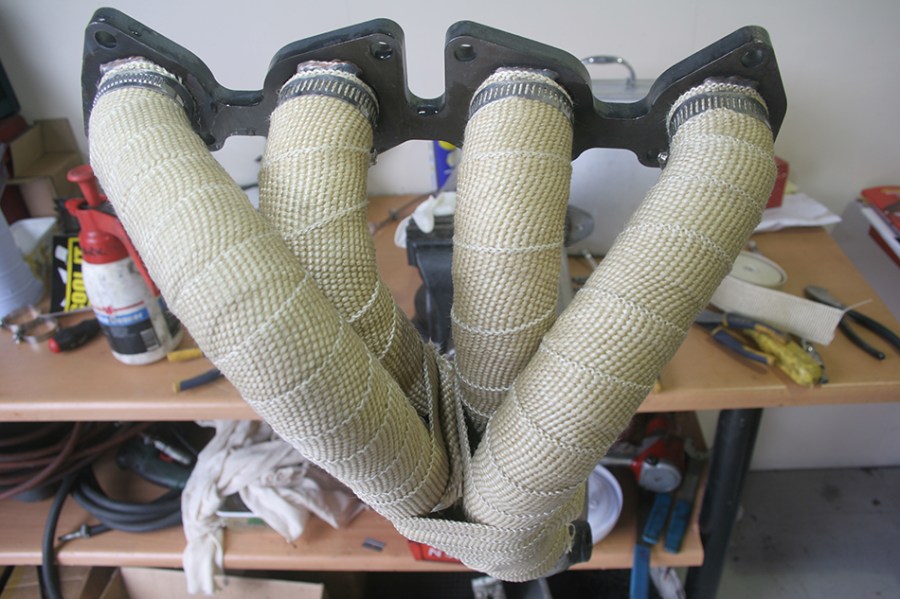
Car exhaust wrapping
Adding exhaust wrap tape around a manifold helps to keep heat out of the engine bay. This method of heat protection can help to reduce under-hood temperatures. It may be useful if you have an open-cone air filter inside the engine bay. Reducing the temperature of the air drawn into the engine means it has a greater density of oxygen. The more oxygen, the better the combustion for the engine.
Exhaust wrap tape can sometimes be fitted in situ around a manifold. However, it’s usually easier to remove the exhaust manifold to be able to wrap it. The ends of the tape are usually secured with heatproof clips.
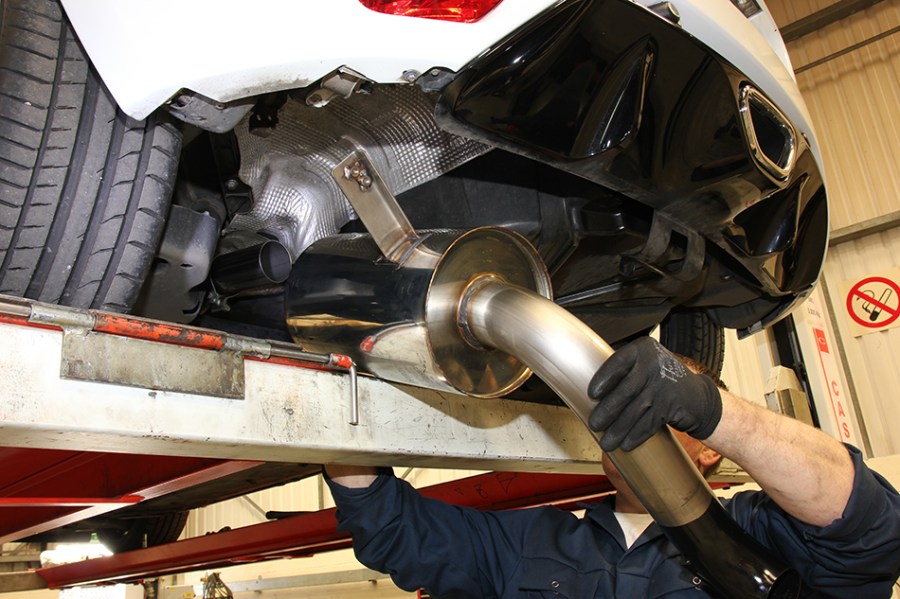
Off-the-shelf exhaust parts
Universal exhaust components such as a sports catalytic converter or a custom muffler can sometimes be fitted. This is often a cheaper route to customizing an exhaust system. However, we can’t guarantee they are the right size and shape. So, if you are tempted to buy a sports cat or custom muffler, check the bore size at each end. If one or both ends are slotted, they will have to fit over whatever you intend to connect to them. So check the internal diameter. If they are not slotted, they will fit inside a connecting pipe, so check the external diameter.
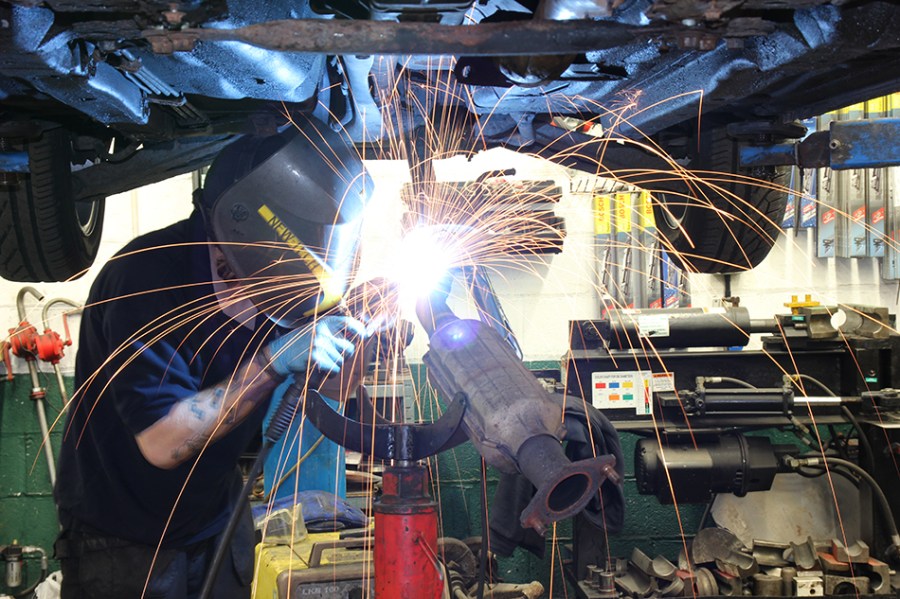
On the job mods
Building a custom exhaust system in situ is one of the best means of ensuring everything can be fitted. However, it can require a high level of skill and tools. You’ll need a lift or inspection pit to work underneath the vehicle. If you intend to weld parts together in situ, make sure the fuel tank is empty and the battery disconnected.
Made to measure custom exhaust
Buying a custom exhaust system designed for your car is often the most expensive option. It’s less time-consuming because the design work has been done. So, it should fit, although exhaust systems are rarely that easy to assemble. You may want to ask your local workshop to help, especially if you don’t have a lift and they do.
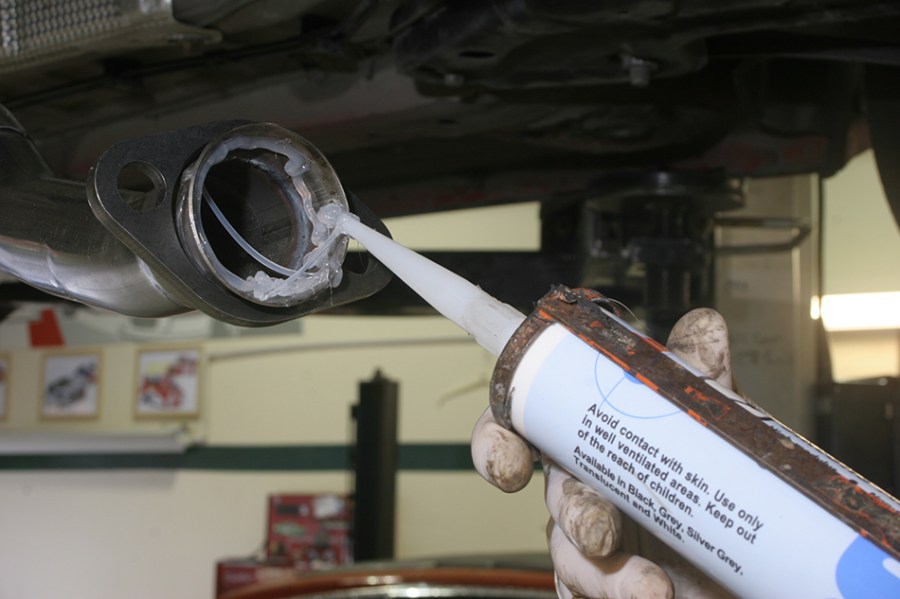
Fitting custom exhaust tips
Whether you are fitting a sports cat or an entire custom system, there are a few tools to help. A rubber, wooden or plastic mallet helps to push pipes and components together. Spray silicone grease around joins to reduce friction when fitting parts together. Exhaust paste or a silicone-based sealant reduces the risk of air leaks. Apply this to joins.
Unless the original rubber exhaust hangers are reused or new ones supplied, have a variety of them to hand. This will help to ensure the exhaust system is securely fitted underneath the vehicle. You may wish to add mounting brackets and bobbins or fit different clamps. Remember the exhaust system needs to be move, so spring-loaded and rubber mounts are usually required.
Is a custom exhaust system better than stock?
If you are experienced enough to make your own custom exhaust system, you may discover all your efforts reduce performance. A more expensive made-to-measure system may have power charts to show the gains you should expect.
Remember that a stock exhaust system is designed to comply with noise and emissions regulations. But at the same time, a car manufacturer usually wants to optimize performance. So a custom system has its limitations, especially if you need to adhere to noise and emissions laws.
Relevant content:

